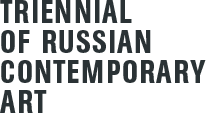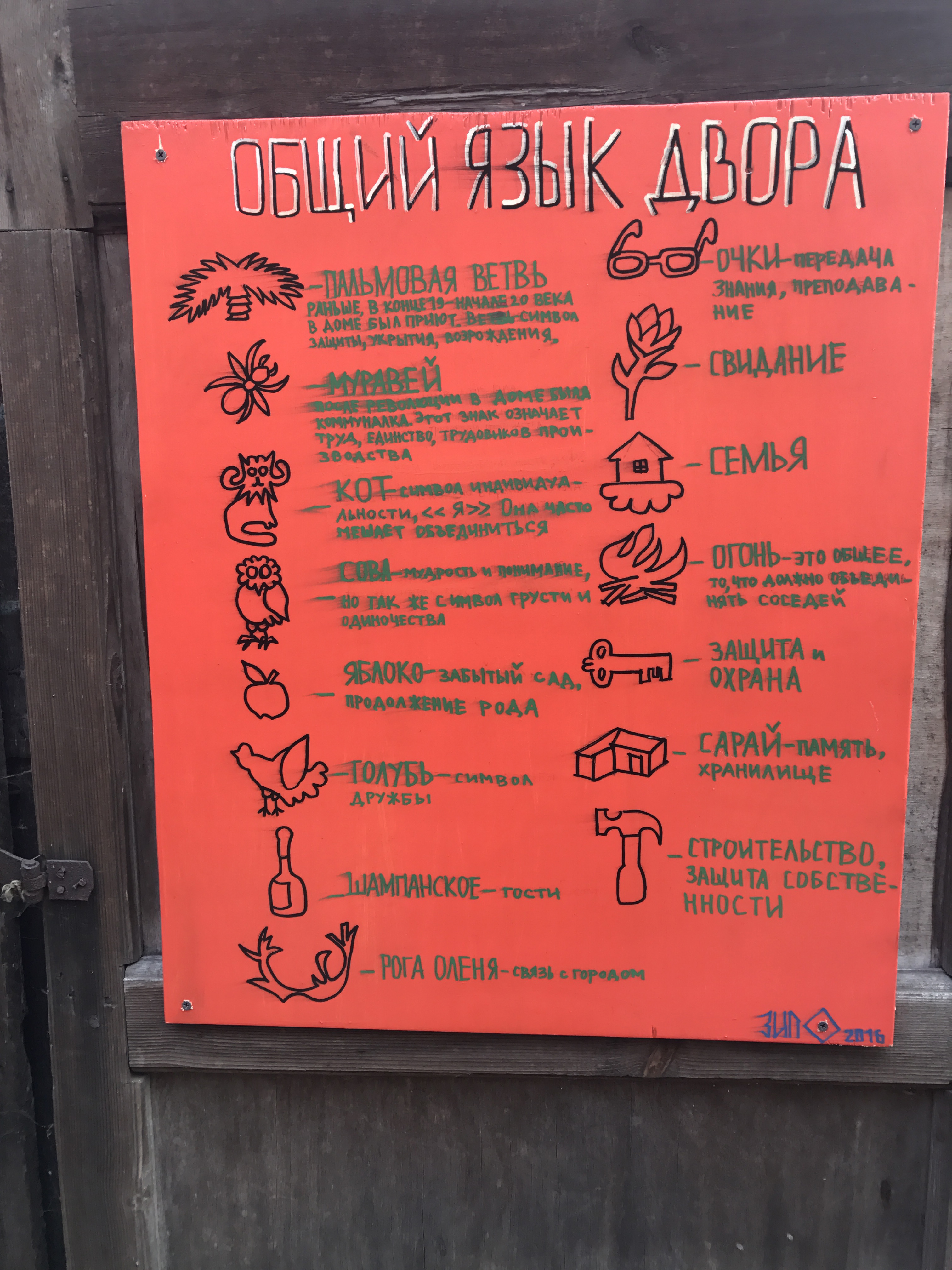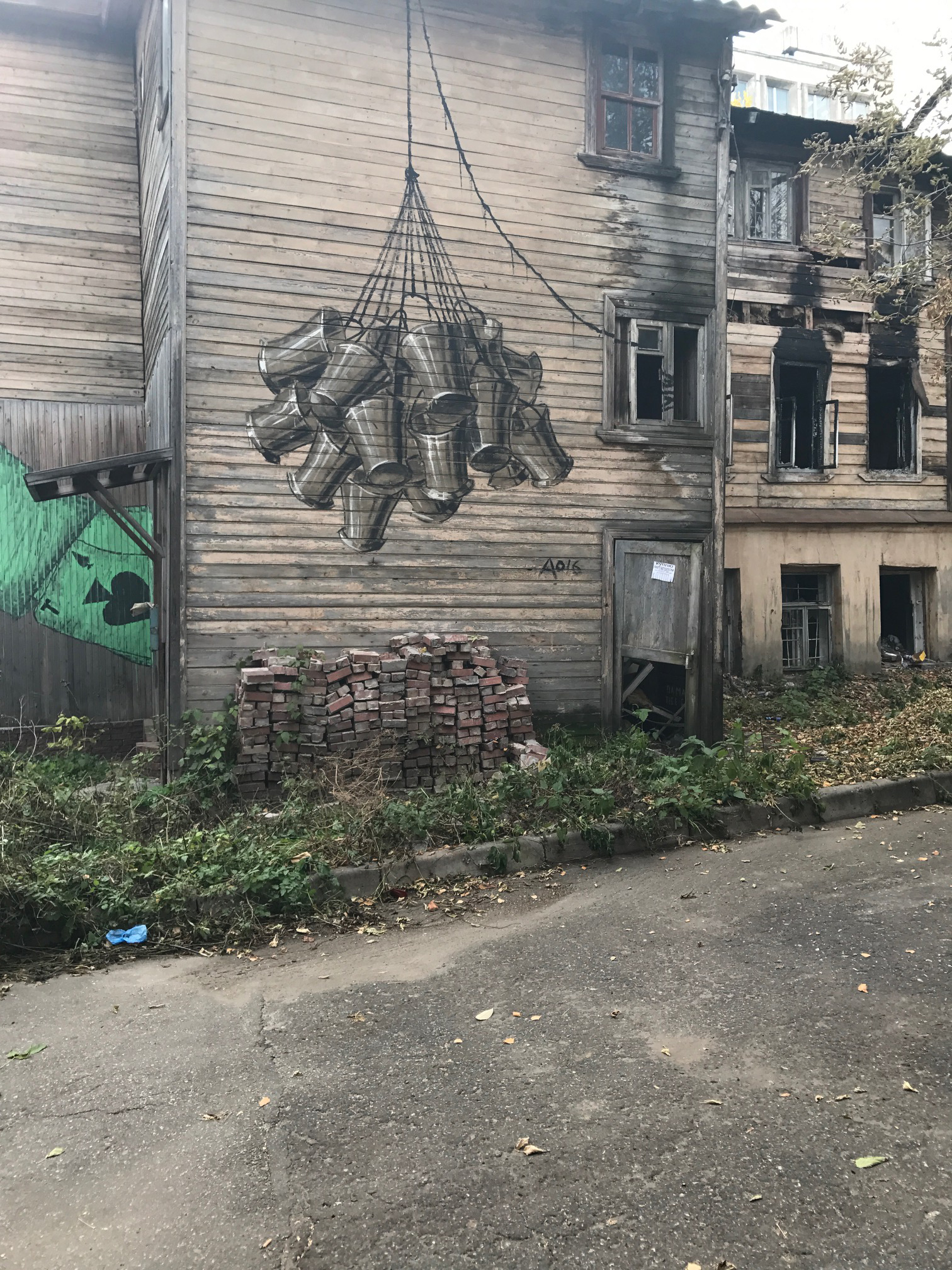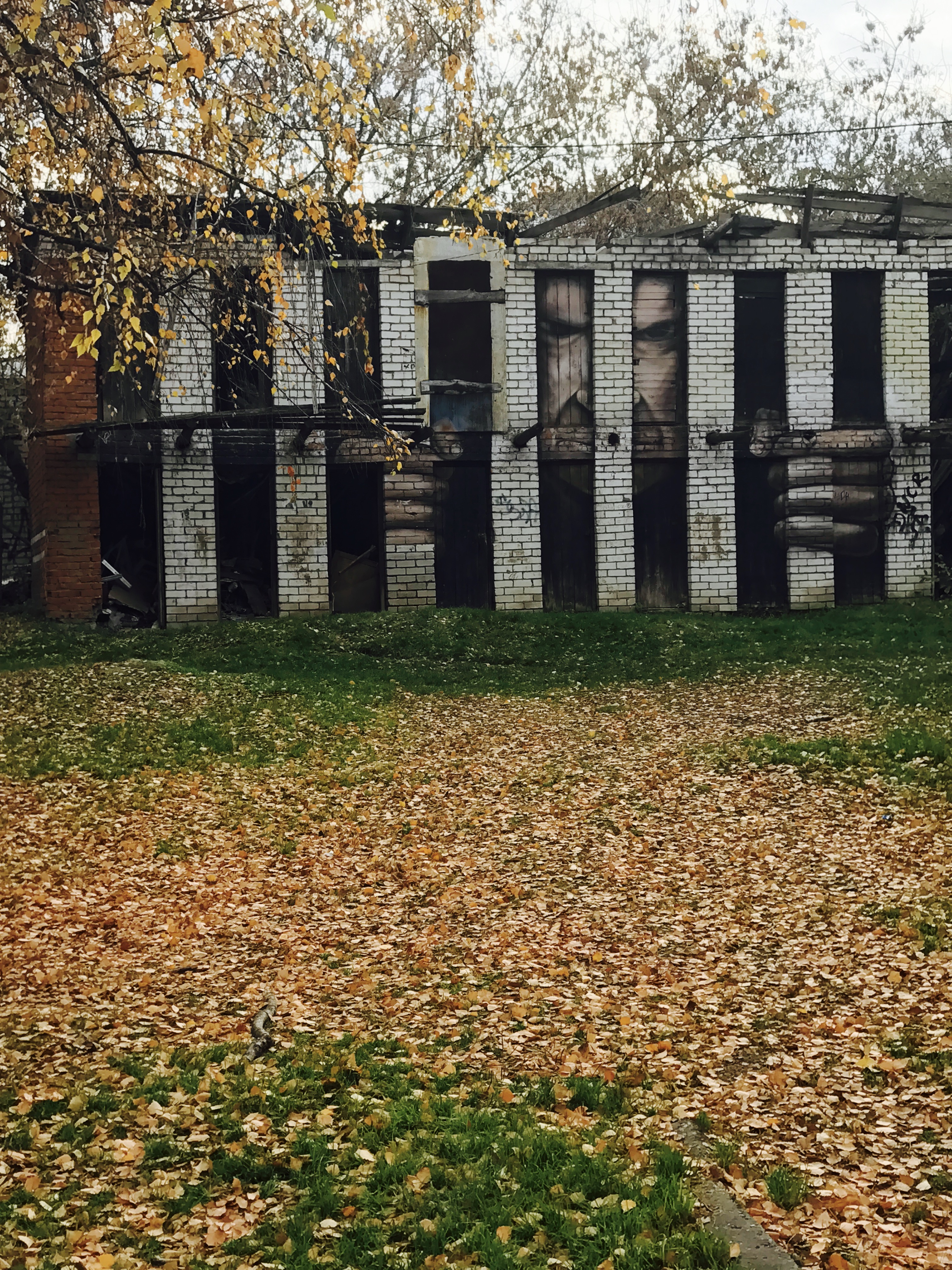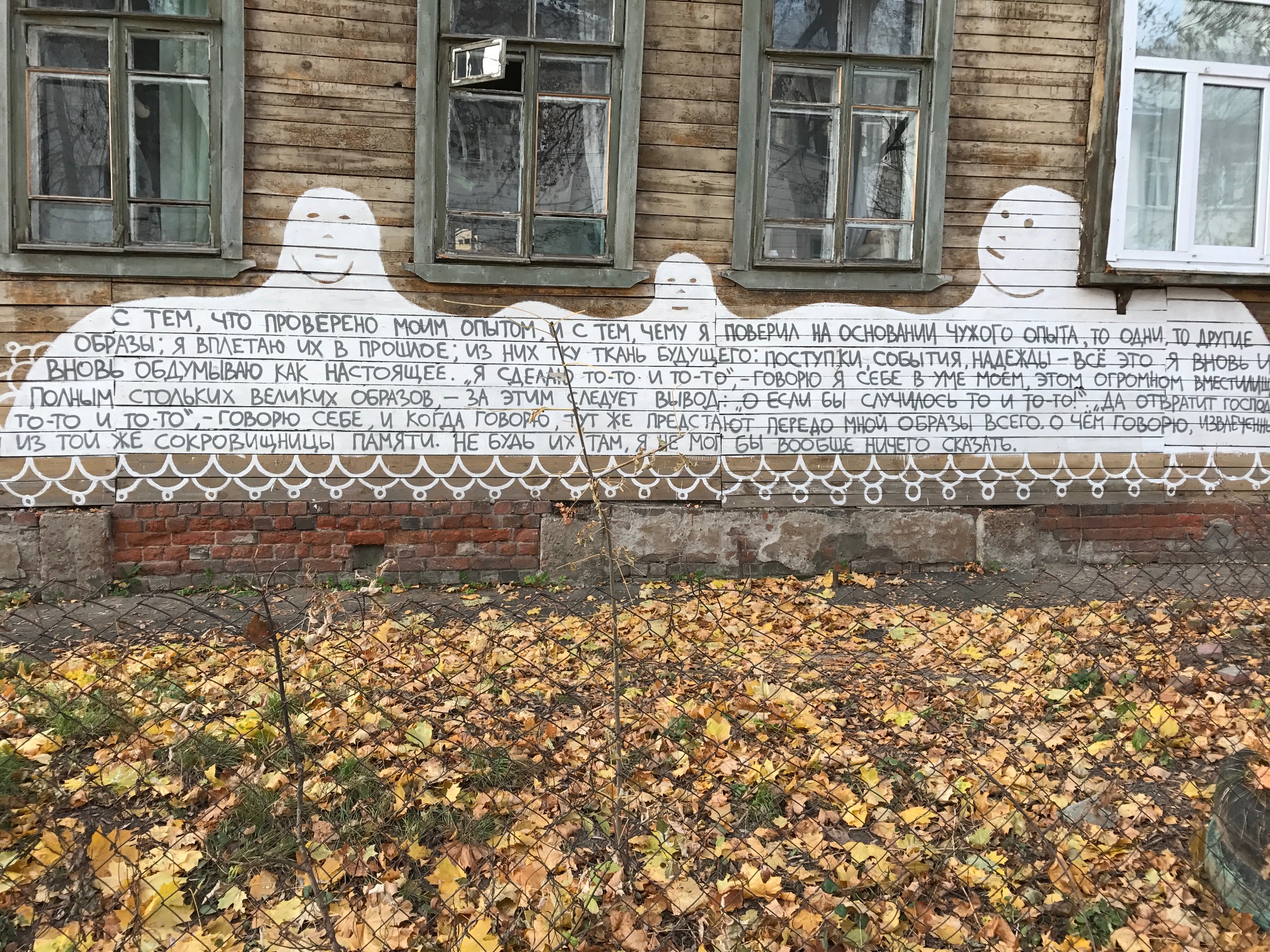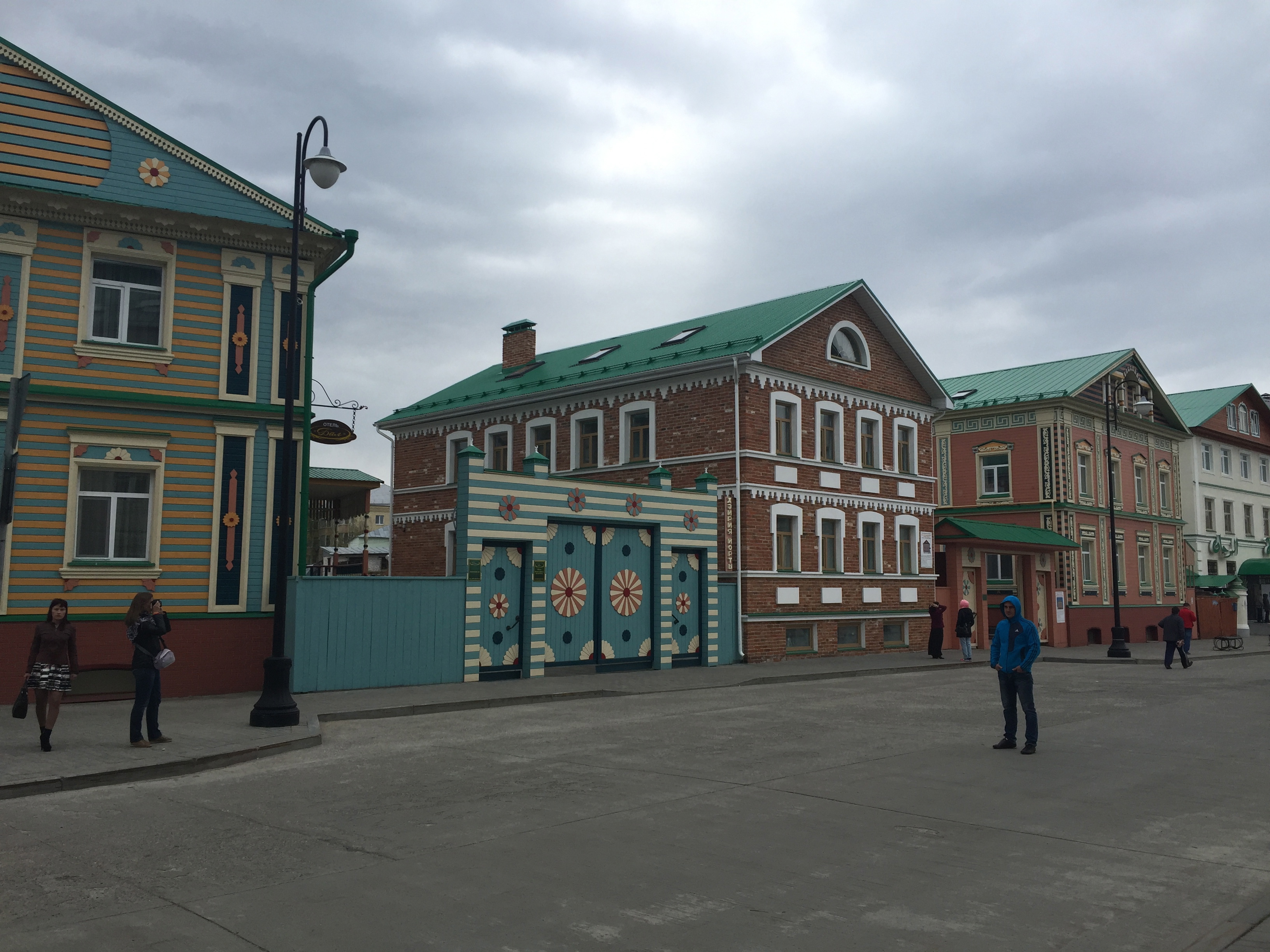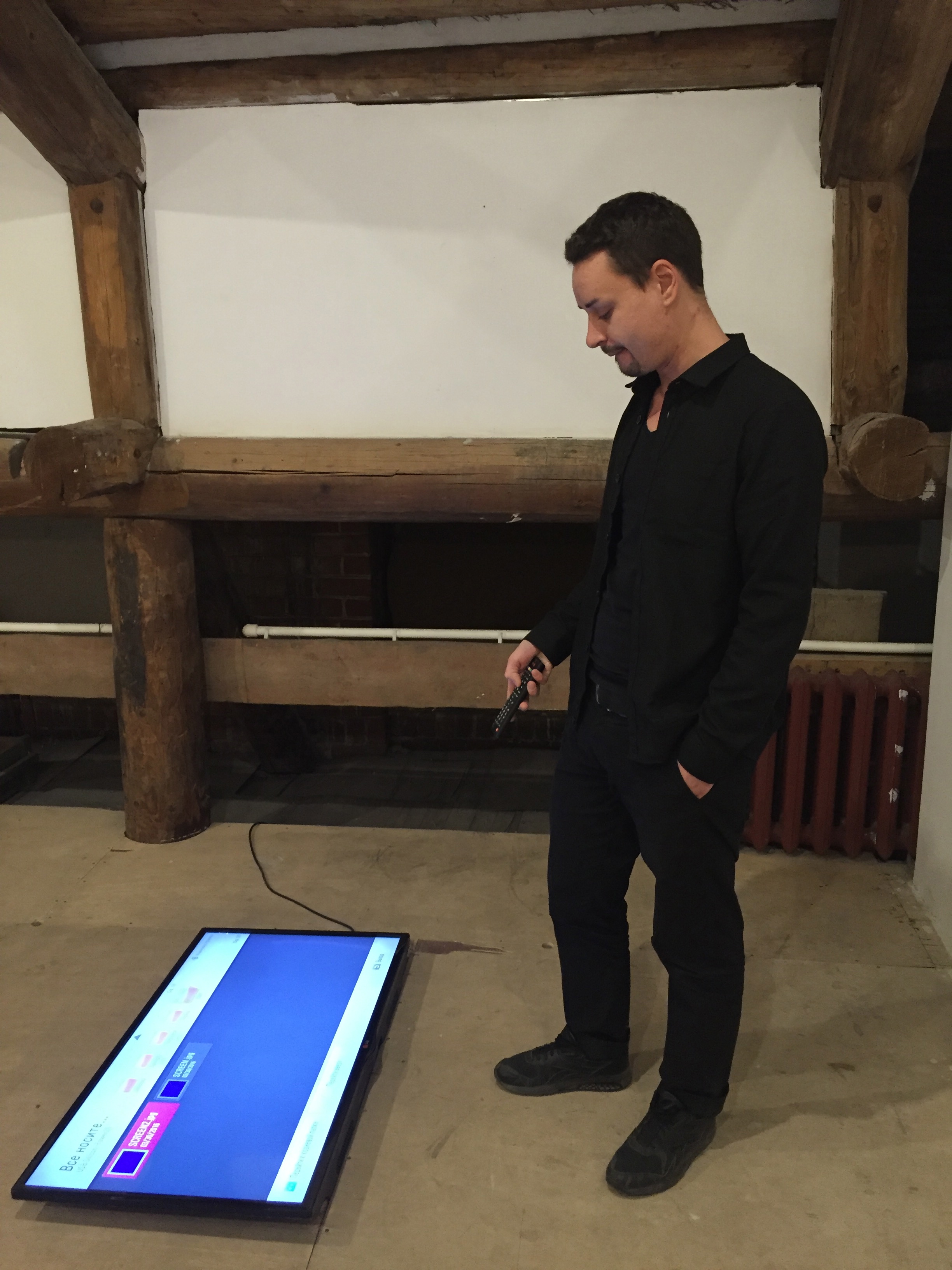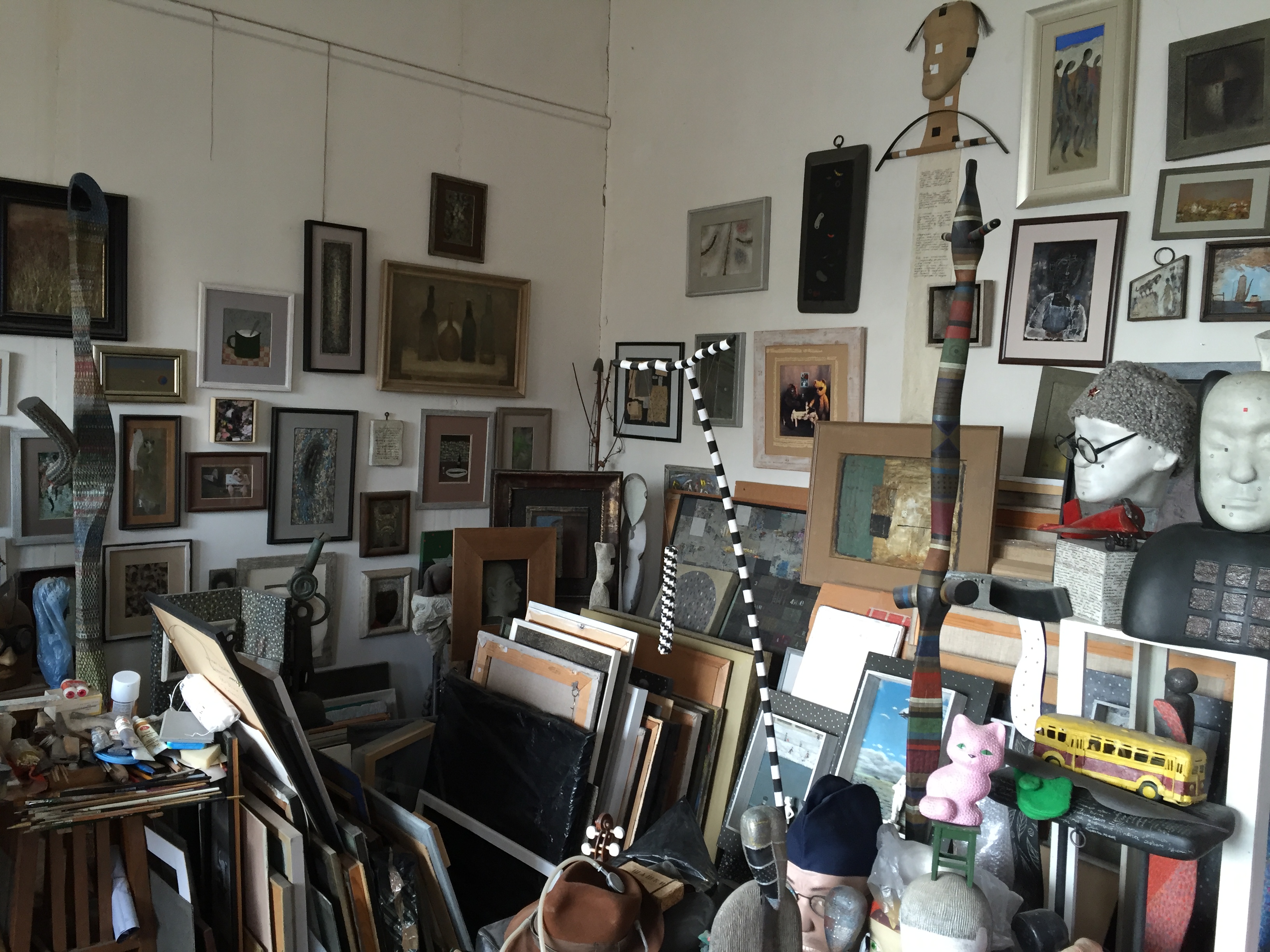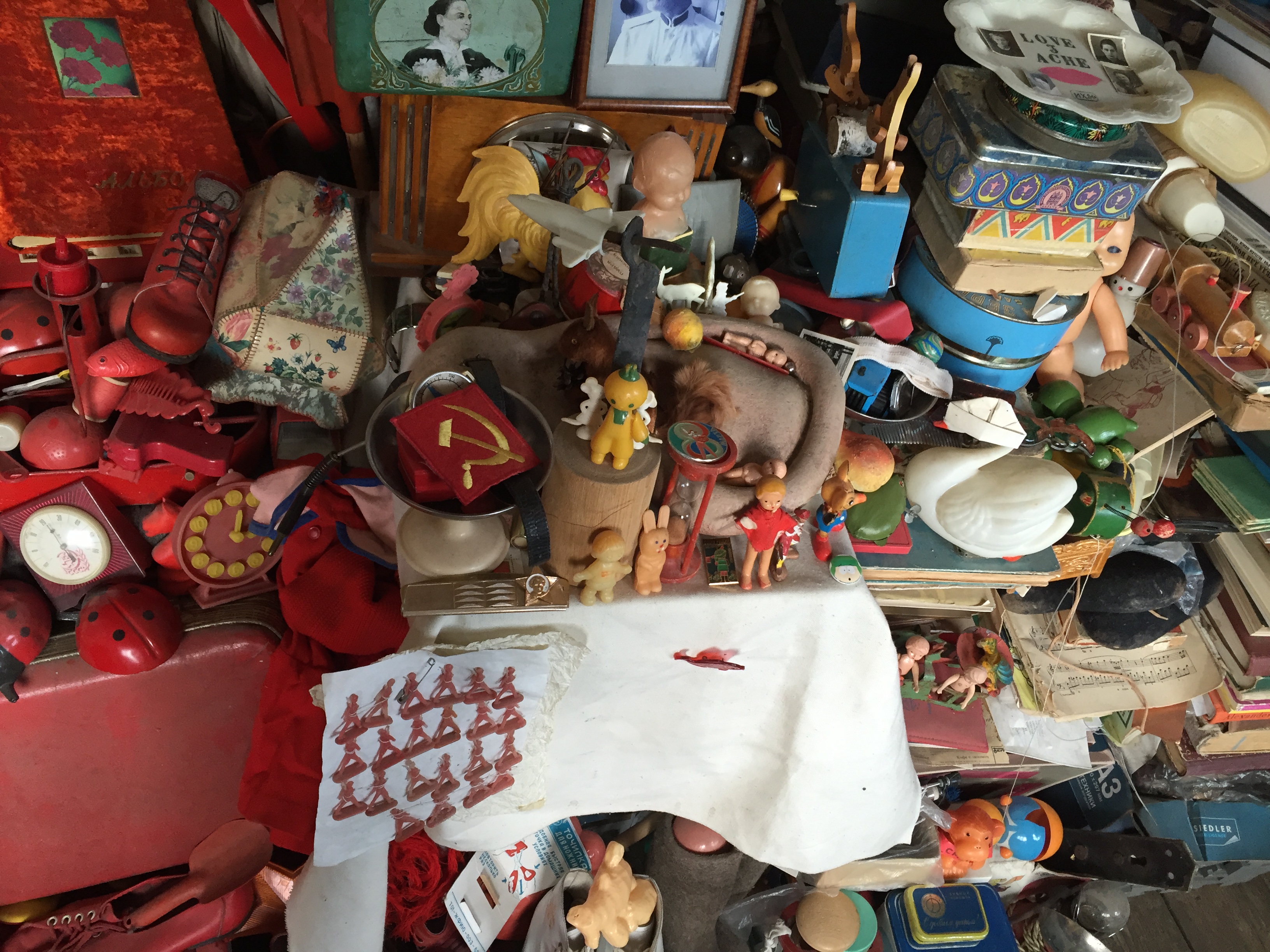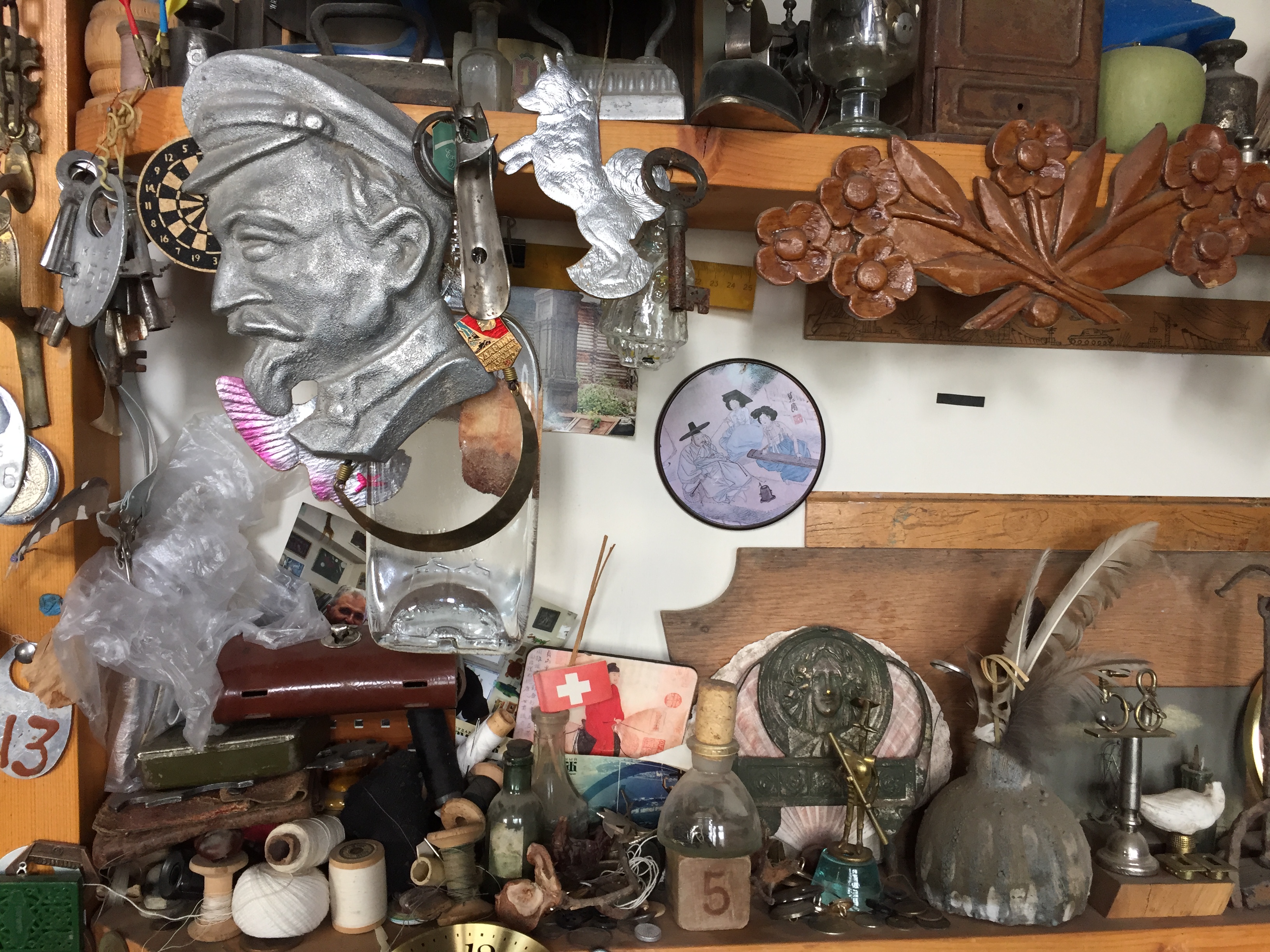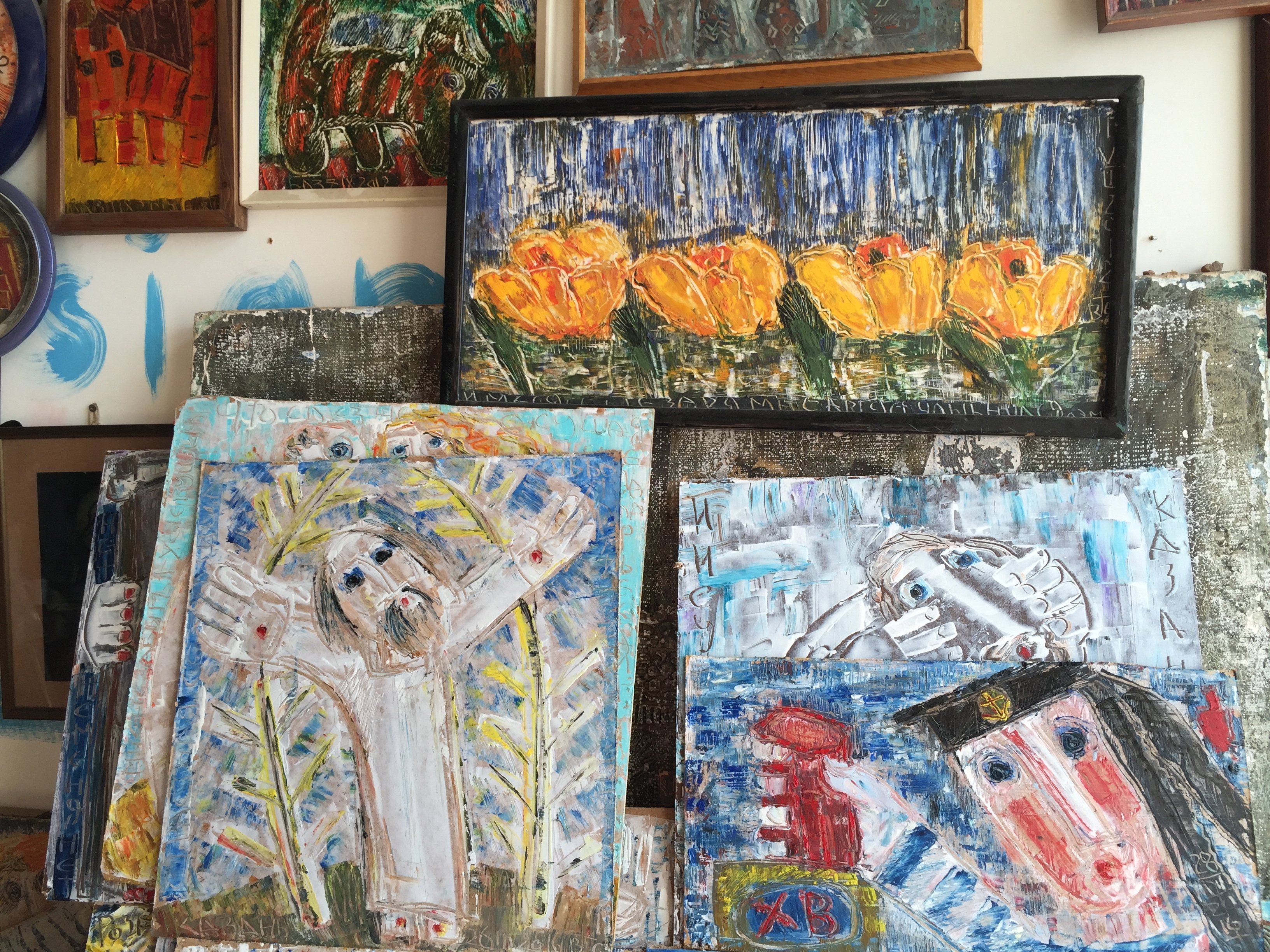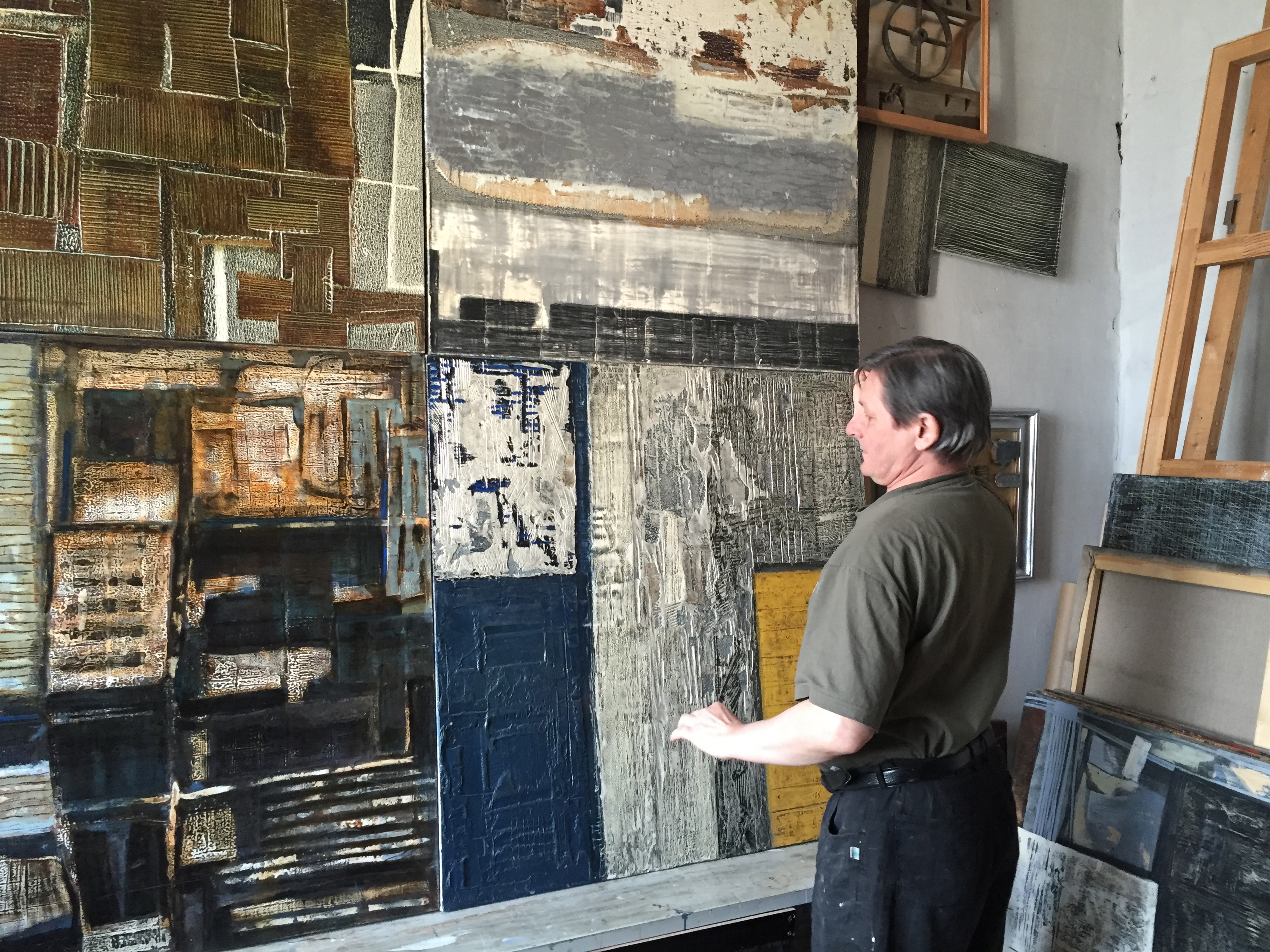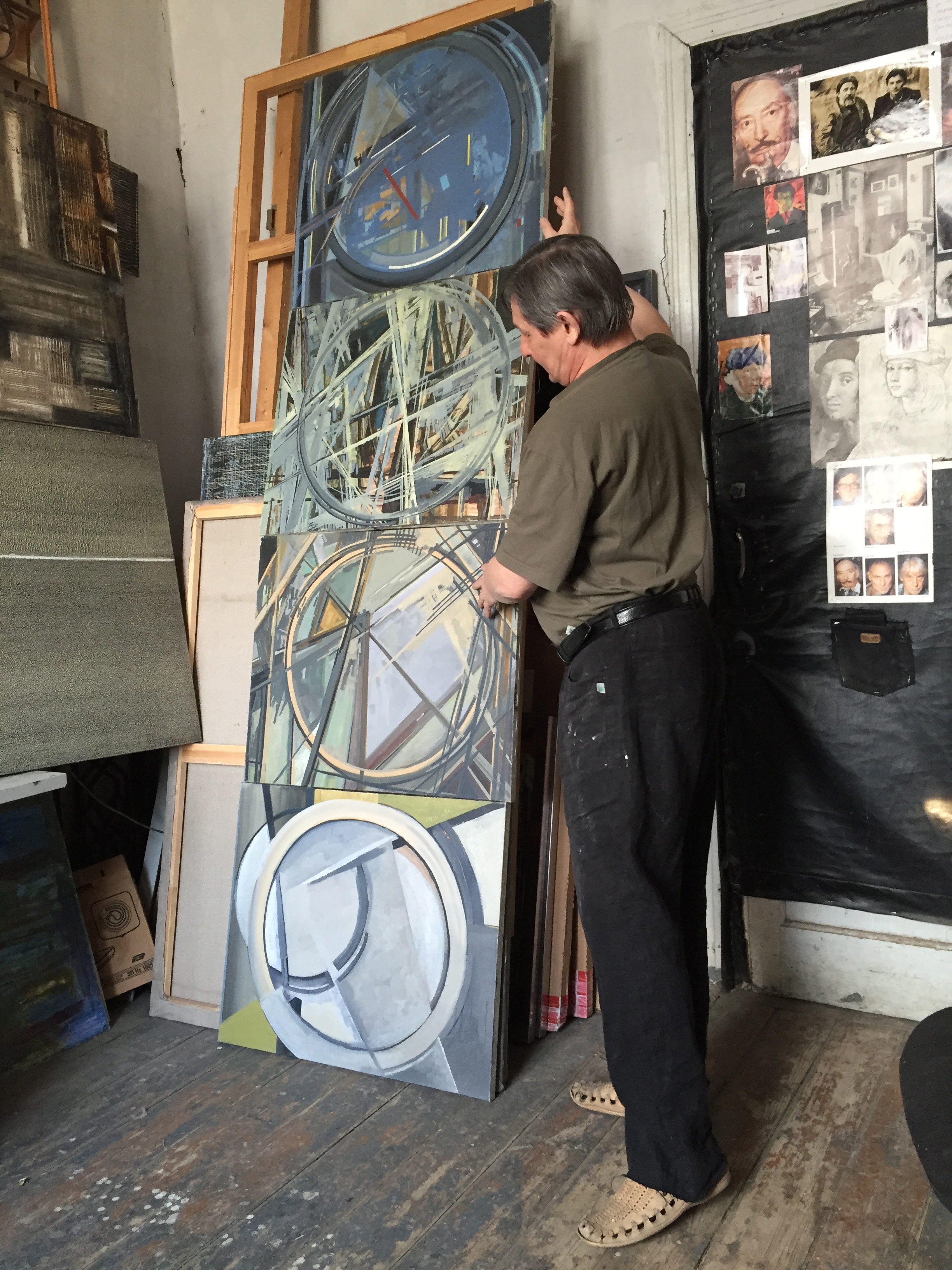Ilgizar recalled with nostalgia old Kazan and the neighborhood where he grew up, even though it was, according to him, poor, uninviting, and sometimes even dangerous. His studio is located in a building that belongs to the Tatarstan Artists Union. It is quite small, yet seems to be a lot bigger on account of all the things stored there. These include not only paintings and objects, but also an incredible collection of odd items that are neatly piled up on the floor, window-sills, table, and shelves: tumbler dolls of different sizes and ages, whistles, pocket flashlights, Soviet Christmas tree decorations made of cardboard and cotton wool, wooden mashers, plastic figures from Kinder Surprise eggs, and lots of other wonderful things brought to life by their owner. All of this was mixed in equal proportions with brushes and tubes of paint. This, it seems, is an inevitable stage in the life of an artist who has outgrown the painterly tradition. It is no coincidence that the room reminded of the personal worlds of legendary Moscow nonconformist artists such as Dmitry Krasnopevtsev and Ivan Kuskov, who created magical universes in their small rooms/studios so as to combine life and art and give a third dimension to their painterly world.
